Canadian Aquaculture R&D Review 2013
Table of Contents
Sea Lice
Development and assessment of a sea lice removal system for farmed salmon
During the sea water production cycle, farmed Atlantic Salmon (Salmo salar) sometimes get infected with sea lice — most often Lepeophtheirus salmonis, a naturally occurring parasite in the north Pacific region. A costly chemical therapeutant is the most common treatment used. Fish pumps and airlift systems for grading and moving farmed fish are used routinely in aquaculture. However, modification of these types of systems specifically for the removal of sea lice is novel. The primary objective of this pilot project is to: 1) incorporate modifications to existing ‘grading’ systems to produce an effective mechanical sea lice removal and collection system; and 2) to assess the new system in the field under normal production conditions.
In summary, the study showed that mechanical removal of sea lice by water jets built into an industry-standard grading device may be a valuable tool in managing sea lice. The initial prototypes were able to remove all stages of sea lice with little to no scale damage to the fish and did not result in any change in mortality but were not effective in reducing the sea lice levels significantly below the threshold levels required to eliminate the need for chemical treatment. A subsequent prototype marginally achieved the threshold level of reduction, suggesting that further modifications may result in more effective removal.
nov. 2011 – feb. 2012
Funded by: DFO – Aquaculture Innovation and Market Access Program (AIMAP) co-funded by: Diversified Aquaculture Inc.; Smith Marine Services; Grieg Seafood BC Ltd.; Centre for Aquatic Health Sciences (BC CAHS)
project lead: Odd Grydeland (Diversified Aquaculture Inc.)
Project team: Henrik Kreiberg (DFO); Daryl Smith (Smith Marine Services); Sonja Saksida (BC CAHS); Barry Milligan (Grieg Seafood BC Ltd.)
Contact: Odd2@shaw.ca
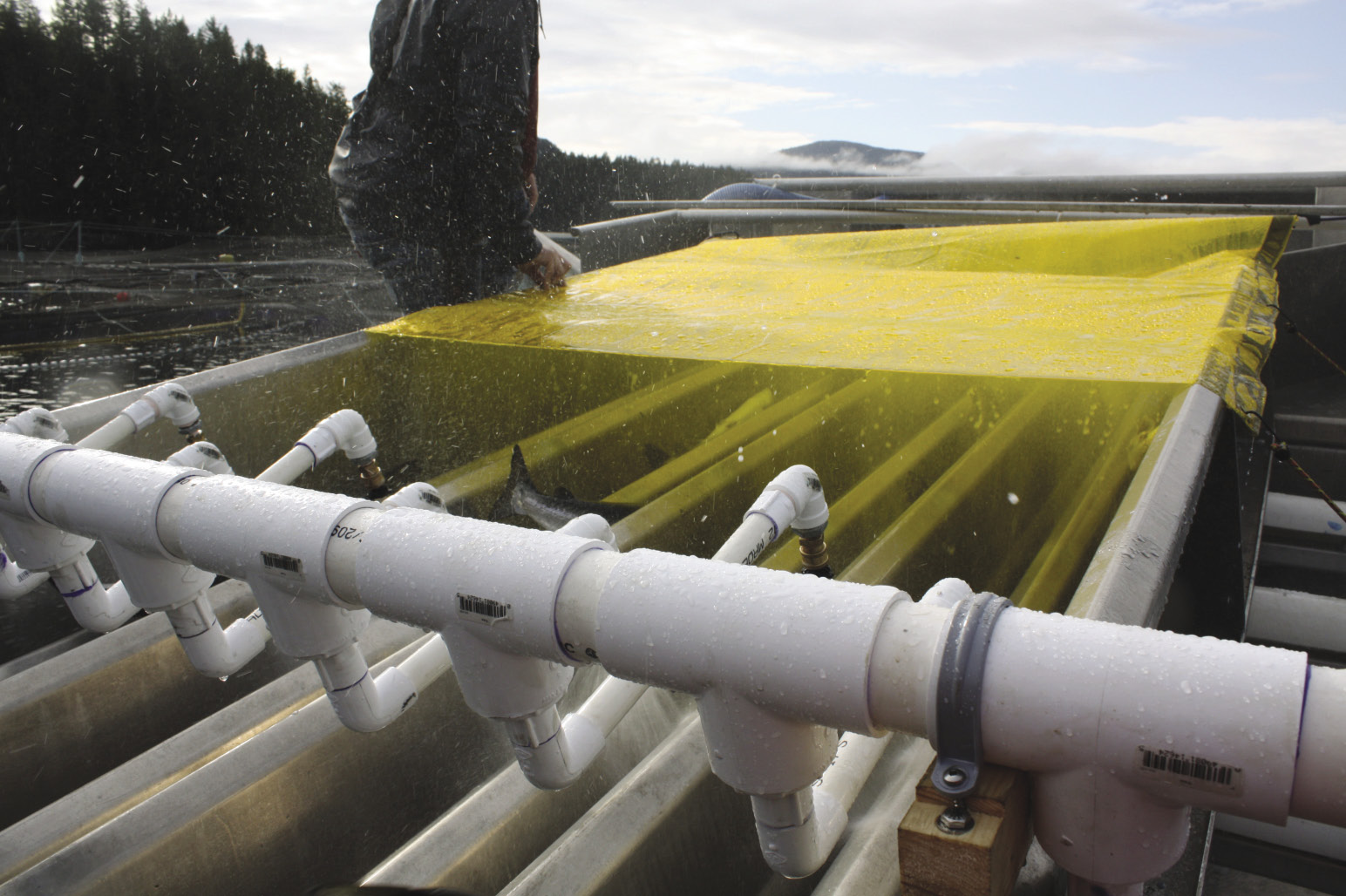
Can sea lice carry and transmit bacterial and viral pathogens to salmon?
The role of ectoparasitic sea lice in disease propagation (as a possible vector) or progression (impacts on the host’s immunology) has not been described. Our research has been conducted in two phases: 1) experimental testing of the vector potential of sea lice — acquisition and transfer of bacteria (Aeromonas salmonicida) or infectious haematopoietic necrosis virus (IHNV) between salmon; and 2) examination of the changes (genetic and cellular) in immune response of salmon skin as a result of sea lice feeding. Our results demonstrated sea lice can acquire the bacterium, Aeromonas salmonicida or virus (IHNV) from a water bath or from feeding on infected salmon. They can then transfer that bacterium or virus to uninfected fish. However, successful transfer only occurred when three conditions were present: very high concentration of pathogen (higher than found in nature), very low water dilution and young salmon (< 200 g) as hosts. Furthermore, the virus and bacteria remain associated with sea lice for limited duration, 24 and 120 h, respectively. Thus, the probability of sea lice transferring these pathogens among salmon under natural settings is extremely low. Our immunological research demonstrated significant differences in the response of key immune associated genes in the skin of three salmon species (Atlantic, Pink, and Chum) when infected by sea lice. Sea lice secretions affect various components of a fish’s immune system. At a genetic level, gene expression (i.e., genes turned “on”) is enhanced among resistant fish (e.g., Pink Salmon); whereas, more susceptible species (e.g., Atlantic Salmon) show depressed immune gene activity (i.e., genes are turned “off” or blocked). Similarly, at the cellular level, the function of key immune cells (macrophages) was impaired among susceptible salmon (Atlantic and Chum), but not among resistant species (Pink). As a final note, we are quite pleased that this project involved considerable student training; 1 post-doctoral fellow, 3 graduate, and 9 undergraduate students.
may 2009 – aug. 2012
Funded by: NSERC Strategic Grant co-funded by: DFO; Marine Harvest Canada; Centre for Shellfish Research (VIU)
project lead: Duane Barker (VIU)
Project team: Eva Jakob, Laura Braden, Colin Novak, Danielle Lewis (VIU); Simon Jones, Kyle Garver, Stewart Johnson (DFO); Diane Morrison, Brad Boyce (Marine Harvest, Canada); Ben Koop (UVic); Scott McKinley (UBC)
Contact: duane.barker@viu.ca
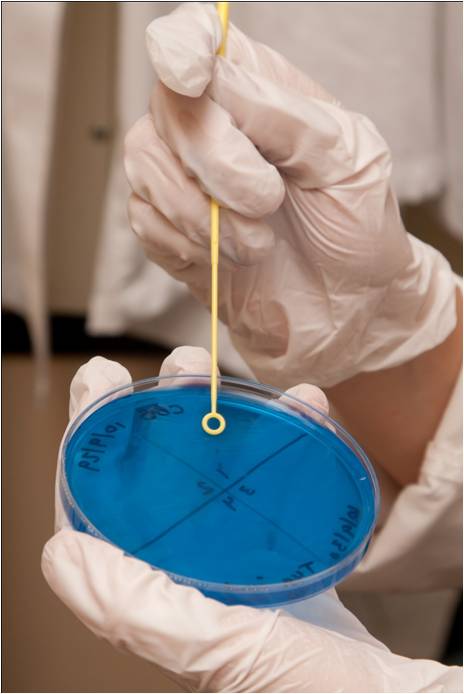
Monitoring and modelling of sea lice interaction with wild and farm salmon in the Broughton Archipelago
The interaction of sea lice with farmed salmon and wild salmon has been the focus of international concern for at least a decade. Health and growth performance issues associated with sea lice infestations continue to be a significant concern for the salmon farming industry globally, driving the implementation of preventative measures in areas where there is the threat of infestation. Since 2003 British Columbia salmon farming industry had been monitoring and reporting sea lice information to government authorities as part of a broader program known as the Provincial Sea Lice Management Strategy, and more recently, in accordance with licensing conditions. In addition to regular monitoring, treatment trigger levels were established in 2003 which are comparable to other international jurisdictions. Concurrently with this management strategy, ten years of intensive research evaluating the effects of farmed-derived sea lice on wild salmon have resulted in a substantial improvement of our knowledge of sea lice biology (genetics, life history, distribution, abundances, and tolerances) and of the susceptibility and resistance of salmonids to sea lice. This project will develop a predictive model of the distribution of sea lice originating from fish farms and estimate the number of encounters of out-migrating salmon with sea lice. It will also establish statistically robust models that capture associations between the sea lice burden on wild fish and conditions on BC fish farms. Finally, the project will monitor the presence of sea lice during the 2012 out-migration of juvenile salmon.
july 2012 – may 2014
Funded by: DFO – Aquaculture Collaborative Research and Development Program (ACRDP) co-funded by: Marine Harvest Canada, Mainstream Canada Ltd.; Grieg Seafood BC Ltd.
project lead: Peter Chandler (DFO)
Project team: Mike Foreman (DFO); Crawford Revie (UPEI); Martin Krkošek (U of T)
collaborators: Diane Morrison (Marine Harvest Canada); Barry Milligan (Mainstream Canada Ltd.); Peter McKenzie (Grieg Seafood BC Ltd.)
Contact: Peter.Chandler@dfo-mpo.gc.ca
Utilization of the Cunner, a wrasse, as a means for sea lice removal in commercial salmon farms
The control of sea lice infestations among populations of farmed salmon in Atlantic Canada has become increasingly difficult over the past years. Farming companies globally find themselves in a position where they have limited abilities to combat sea lice and are now using emergency bath-type pesticide treatments to control infections.
One method of sea lice control deserving of a thorough investigation is the use of wrasse or cleaner fish. With this type of approach, wrasse are placed directly in the sea cages with the farmed salmon and these fish are predicted to consume the sea lice off the salmon. If proven to be practical, the use of wrasse would be a novel sea lice control approach as it would be an environmentally friendly and natural biological tool.
The objectives of this project are: to study the behaviour of Cunners, a wrasse, and their interactions with salmon and vice versa, and to determine if Cunners will consume feed pellets for salmon (feed preference tests) through tank trials; and to test the effectiveness of Cunners as cleaner fish in commercial sea cages.
sep. 2011 – oct. 2012
Funded by: DFO – Aquaculture Innovation and Market Access Program (AIMAP) co-funded by: New Brunswick Department of Agriculture, Aquaculture and Fisheries (NB DAAF)
project lead: Keng Pee Ang (Kelly Cove Salmon Ltd.)
Project team: Frank Powell, Peter Groom, Leighanne Hawkins, Randy Griffin, Nell Halse (Kelly Cove Salmon Ltd.); Shawn Robinson (DFO)
collaborators: Per Gunnar Kvenseth (Villa Organic AS – Norway)
Contact: keng.pee.ang@cookeaqua.com
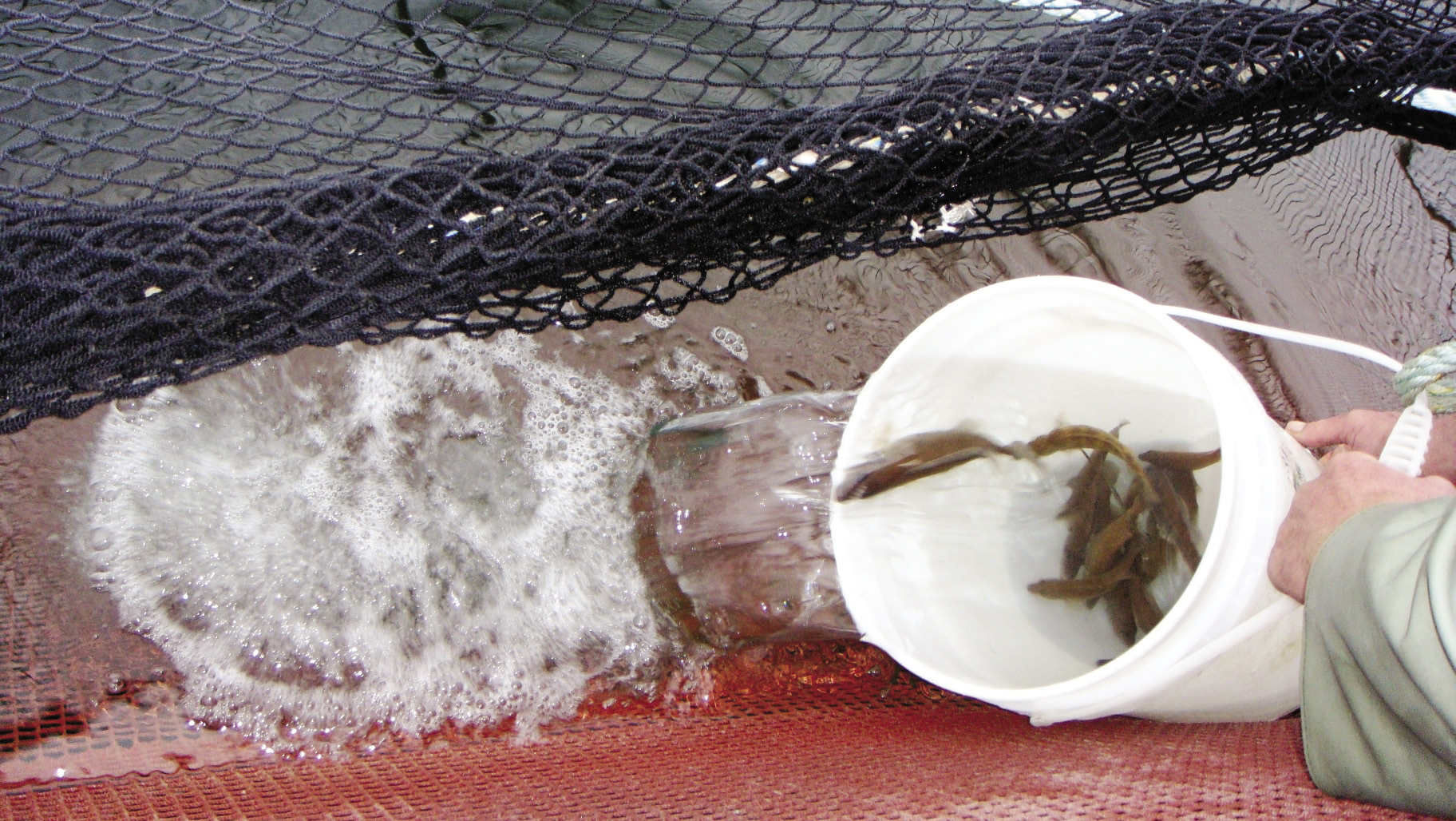
Refinement of the principles of larval sea lice capture using a combination of biological filters and physical light traps in a commercial setting
Sea lice, Lepeophtheirus salmonis, are an endemic ectoparasite that can cause direct physical damage to fish and incur huge treatment costs for the aquaculture industry. Chemo-therapeutants and animal husbandry practices have traditionally been used to keep the parasites under control. However, the control of sea lice infestations among populations of farmed salmon in Atlantic Canada has become increasingly difficult over the past two years with the summer of 2010 being the worst on record in certain areas of New Brunswick. The industry has an immediate need for an integrated pest control/management strategy that relies on multiple approaches for sea lice control. This project will expand on previous ACRDP research on the ability of mussels to act as a bio-filter to remove sea lice from an environment, and will assess the ability of various types of sea lice traps to collect sea lice for removal from a cage culture environment. Previous lab findings will be tested in field situations prior to advancing to the commercialization stage.
may 2011 – mar. 2012
Funded by: DFO – Aquaculture Collaborative Research and Development Program (ACRDP) co-funded by: Kelly Cove Salmon Ltd.
project lead: Shawn Robinson (DFO)
Project team: Andrea Bartsch (DFO)
collaborators: Keng Pee Ang, Frank Powell (Kelly Cove Salmon Ltd.)
Contact: Shawn.Robinson@dfo-mpo.gc.ca
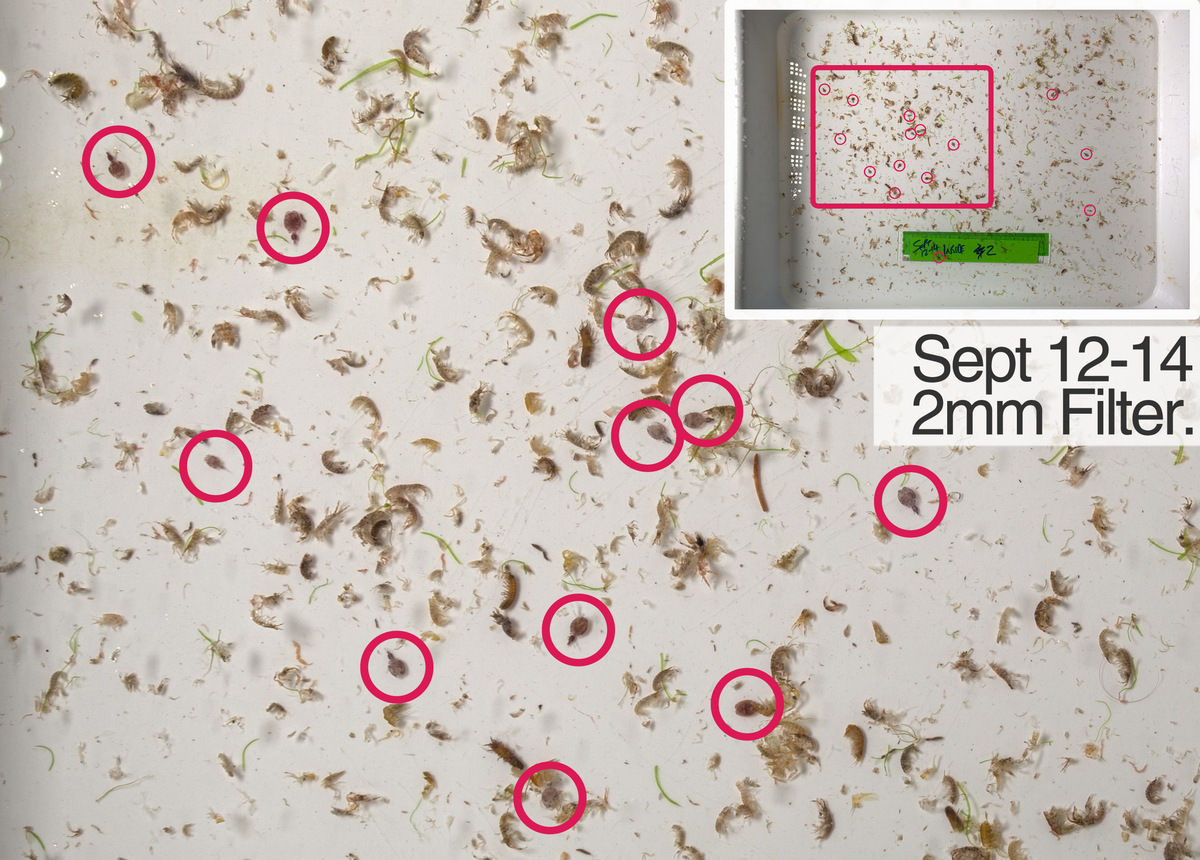
Detecting SNP association with resistance to sea lice in Atlantic Salmon
Developing breeds of Atlantic Salmon (Salmo salar) that are more resistant to sea lice (Lepeophtheirus salmonis) could benefit the Canadian aquaculture industry. Sea lice resistance is typically measured on the relatives of potential broodstock making it difficult to select for in a traditional breeding program. In the future, marker-assisted selection could increase the rate of genetic improvement in sea lice resistance. Our work involves genotyping candidate broodstock and their relatives using DNA markers called single nucleotide polymorphisms (SNPs). Our initial objective is to detect associations between 6000 SNPs and resistance to sea lice in the Saint John aquacultural strain of Atlantic Salmon.
We are measuring resistance by challenging recent smolts with sea lice and then recording the number of sea lice found on each fish. Parents of those fish are genotyped for the 6000 SNPs. We will analyze the data to detect associations of resistance in offspring to SNP genotypes of their parents.
Preliminary results for sea lice challenges in 2011 show some SNP associations with resistance in fish. This is promising for our study and suggests that in the future, resistance could be successfully included in North American Atlantic Salmon breeding programs using marker-assisted selection.
sept. 2009 – sept. 2013
Funded by: NSERC Strategic Project Grant
project lead: Elizabeth Boulding (U. Guelph)
Project team: Christina Rochus, Larry R. Schaeffer, Jane Tosh (U. Guelph); Keng P. Ang (Cooke Aquaculture Inc.); Brian Glebe, Steven Leadbeater (DFO)
Contact: boulding@uoguelph.ca
www.uoguelph.ca/ib/people/faculty/boulding.shtml
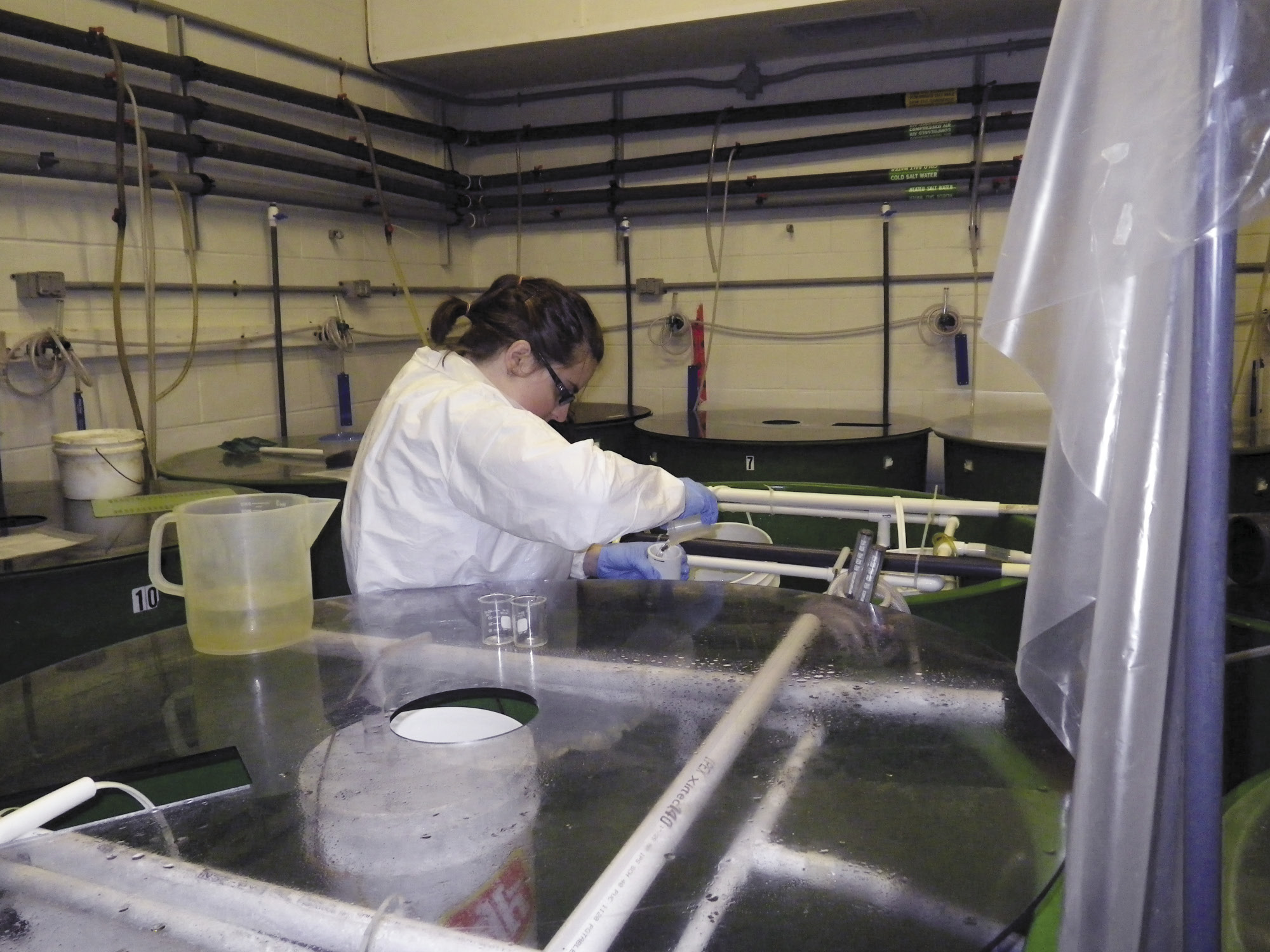
Sea lice vaccines for salmonid aquaculture
Sea lice infestations present a significant challenge to aquaculturists, veterinary clinicians, and vaccine developers. Recent R&D at Pfizer Animal Health (Pfizer Canada Inc.) has identified a set of vaccine candidates. The goal of this project was to complete the remaining development, pre-commercial manufacturing, and regulatory work required to license a vaccine for the control of sea lice infestations of farmed salmon in Canada.
Over the past year, the candidate vaccine antigens were tested. However, the trial results did not show significant reduction in the vaccinated groups.
Pfizer Inc. understands how important a sea lice vaccine is to Canada and to the international aquaculture community. As a result, they are fully committed to this project and continue to work toward proving efficacy and obtaining all related Canadian regulatory approvals.
apr. 2011 – mar. 2012
Funded by: DFO – Aquaculture Innovation and Market Access Program (AIMAP) co-funded by: Fisheries & Oceans Canada (Science Sector); British Columbia Ministry of Agriculture
project lead: Jan Burian (Pfizer Canada)
Project team: Elizabeth Crump, David Asper, Kyle Clarke (Pfizer Canada Inc.)
collaborators: Fundacion de Chile; St. Andrews Biological Station (DFO)
Contact: Jan.Burian@pfizer.com
www.pfizer.ca/en/home
Field testing “green-technology” sea lice traps and documenting on-site dynamics of sea lice early life history
The sea louse, Lepeophtheirus salmonis, continues to be a global problem for salmon farming operations. Chemo-therapeutants and animal husbandry practices have been used to keep the parasites under control, however, studies have indicated that sea lice are starting to become resistant to therapeutants with continued exposure. There is also concern over the impacts of therapeutants upon the ecosystem in which they are being used. Additionally, operational practices at farm sites could be contributing to the magnification of sea lice infections on the salmon if control measures are not being used throughout all sea lice life stages (e.g., eggs) thereby allowing the parasite to continue to breed more successfully. A more integrated approach to pest management, including the use of alternative (non-chemical) treatments, would be helpful in supplementing chemical treatments and preventative husbandry practices. Light-based traps are considered an additional
(non-chemical) treatment method. In this particular study, traps were demonstrated in laboratory trials to significantly increase the removal rate of sea lice larvae from the water column, as larvae (both nauplii and copepodites) responded strongly to light. This project will field test the concept that physical light-based traps, in conjunction with an understanding of the on-site sea lice larval dynamics, can play a role in helping to control sea lice populations. It will also analyze and refine the effectiveness of the traps to specifically target sea lice and minimize the capture of non-target species.
aug. 2012 – may 2014
Funded by: DFO – Aquaculture Collaborative Research and Development Program (ACRDP) co-funded by: Kelly Cove Salmon Ltd.
project lead: Shawn Robinson (DFO)
collaborators: Keng Pee Ang, Frank Powell (Kelly Cove Salmon Ltd.)
Contact: Shawn.Robinson@dfo-mpo.gc.ca
Potential of using Cunners to control sea lice infestation of Atlantic Salmon in Newfoundland
In most salmon farming countries, prolonged use of chemical therapeutants (e.g., SLICE®) to control sea lice (Lepeophtheirus salmonis) infestation has led to the emergence of resistance in some local sea lice populations. The use of cleaner fish (e.g., wrasse species) to remove sea lice from Atlantic Salmon in cages has been developed and utilized in Europe with some success and has been considered in Canada (NB) (i.e., through the use of the wrasse-like Cunner). However, many questions still remain unanswered regarding the success of this alternative method of sea lice control in this country and in particular in Newfoundland (Cunner stock differences in effectiveness; species fitness; geographical differences in seasonal effectiveness in active cleaning, among others). It is the goal of this project to use local Newfoundland populations of Cunners as potential cleaner fish and evaluate feeding behaviour on sea lice by comparing stocks and fish sizes. This project will bring relevant information on the potential application of Cunners to control sea lice in salmon cages in Newfoundland.
apr. 2011 – mar. 2012
Funded by: DFO – Aquaculture Collaborative Research and Development Program (ACRDP) co-funded by: Cold Ocean Salmon Inc. – Cooke Aquaculture Inc.
project lead: Dounia Hamoutene, Harry Murray (DFO)
Project team: Danny Boyce (MUN); Danny Ings, Lynn Lush, Kim Hobbs, Juan Perez-Casanova (DFO)
collaborators: Keng Pee Ang (Cold Ocean Salmon Inc. – Cooke Aquaculture Inc.)
Contact: Dounia.Hamoutene@dfo-mpo.gc.ca,
Harry.Murray@dfo-mpo.gc.ca
Cumulative impacts, kinetics and tissue distribution of anti- sea lice pesticides in non-target organisms
This research uses oxidative stress biomarkers to assess the sublethal and cumulative impacts of sea lice treatments (AlphaMax® [deltamethrin] and Salmosan® [azamethiphos]) on non-target organisms. Kinetic studies will be conducted to assess the bioaccumulation rate and persistence of AlphaMax® in shrimp and lobster tissue. Damage caused by oxidative stress (lipid and protein oxidation) will be assessed after exposing shrimp and lobster to Salmosan® in the laboratory for long periods of time. The connection between this biochemical damage, histological lesions and resistance to stress will be assessed in adult lobster. Bioaccumulation speed and tissue distribution in shrimp and lobster will be assessed using macroautoradiography and high-performance liquid chromatography coupled with flow scintillation counting (HPLC-FSC) at environmentally-realistic doses by using in-house synthesized 14C deltamethrin. Macroautoradiography is a nuclear technique used to quantitatively determine the distribution of a chemical product labelled with a radioactive atom such as 14C in thin cryosections (0.05 mm) of an entire animal. Preliminary work will also be conducted before assessing the bioavailability of deltamethrin adsorbed in suspended particulate that settles at the bottom.0
apr. 2011 – mar. 2013
Funded by: DFO – Program for Aquaculture Regulatory Research (PARR)
project lead: Catherine Couillard (DFO)
Project team: Claude Rouleau, Benoît Légaré (DFO)
collaborators: L. Burridge, Andrew Cooper, Susan Waddy (DFO)
Contact: Catherine.Couillard@dfo-mpo.gc.ca

Evaluation of the efficiency of non-chemical methods to reduce the impact of sea lice associated with salmon aquaculture sites using the principles of bio-filtration and trapping
This project seeks to provide the proof of concept information from laboratory research that is required to advance to the next stage, which is to evaluate the feasibility of non-chemical methods for the control of sea lice as part of an overall integrated farm health management plan. Specifically, there are two objectives: 1) to evaluate the effectiveness of the Blue Mussel (Mytilus edulis) in removing sea lice nauplii from the water column (evaluation of the removal efficiency will be performed via gut content analysis of the mussels using recently developed PCR-based techniques); and 2) to test the behavioural responses of sea lice to a number of established cues on light, colour, motion, and chemical attractants in various combinations. Once a suitable combination is found, a prototype will be made and tested in comparison to an existing trap from the West Coast.
aug. 2010 – mar. 2011
Funded by: DFO – Aquaculture Collaborative Research and Development Program (ACRDP) co-funded by: Kelly Cove Salmon Ltd.; Admiral Fish Farms Ltd.
project lead: Shawn Robinson (DFO)
Project team: Ian Bricknell (U. Maine); Andrew Cooper (DFO)
collaborators: Keng Pee Ang (Kelly Cove Salmon Ltd.); Howard Streight (Admiral Fish Farms Ltd.)
Contact: Shawn.Robinson@dfo-mpo.gc.ca

The Broughton Archipelago Management Plan (BAMP) in British Columbia
The Broughton Archipelago Management Plan (BAMP), a unique multi-lateral initiative, involving the various stakeholders with an interest in the management of sea lice in British Columbia, was developed to provide a means with which to clarify key scientific findings and ensure their appropriate application to aquaculture production in the region.
BAMP objectives include: coordinating the on-going monitoring of sea lice on juvenile wild salmon through extensive sampling during the spring migration period; facilitating the integration of historical sea lice data collected over the past decade in the Broughton Archipelago by the farming industry, government and independent researchers; comparing spatial patterns and temporal trends of sea lice infestation; and developing models to better predict sea lice transmission and assess the efficacy of different farm and sea lice management strategies.
For each of the spring migration periods from 2010 to 2012, an extensive field programme has been carried out under the auspices of BAMP to determine, among other things, the relative merits of various sampling strategies in assessing levels of sea lice infestation on wild Pacific salmonids and the most efficient way to achieve such assessments. In addition, a virtual research environment has been created to allow for the sharing of various types of data collected over the past decade and the integration of current research data/results to ensure that the models created are calibrated and validated using the most extensive sets of available data.
jan. 2010 – dec. 2014
Funded by: Fisheries and Oceans Canada (DFO); Coastal Alliance for Aquaculture Reform (CAAR); Marine Harvest Canada; Mainstream Canada; Grieg Seafood
Project team: Peter Chandler, Mike Foreman, Simon Jones (DFO); Martin Krkošek (U of T); Peter McKenzie (Mainstream Canada); Barry Milligan (Grieg Seafood); Diane Morrison (Marine Harvest Canada); Crawford Revie (UPEI)
collaborators: Keng Pee Ang (Cold Ocean Salmon Inc. – Cooke Aquaculture Inc.)
Contact: crevie@upei.ca
www.bamp.ca
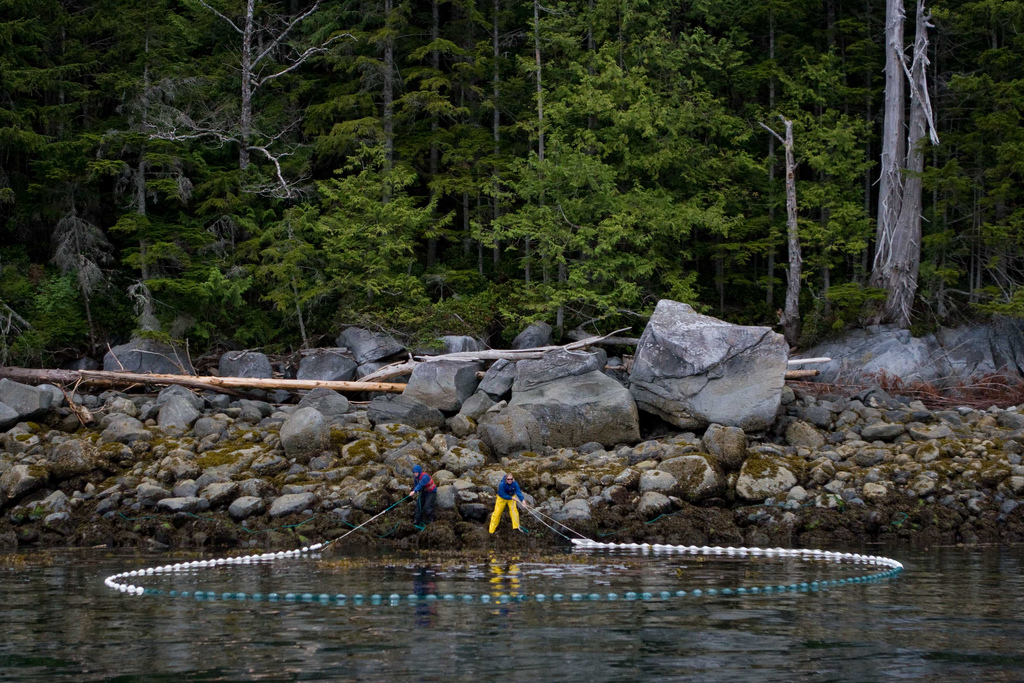
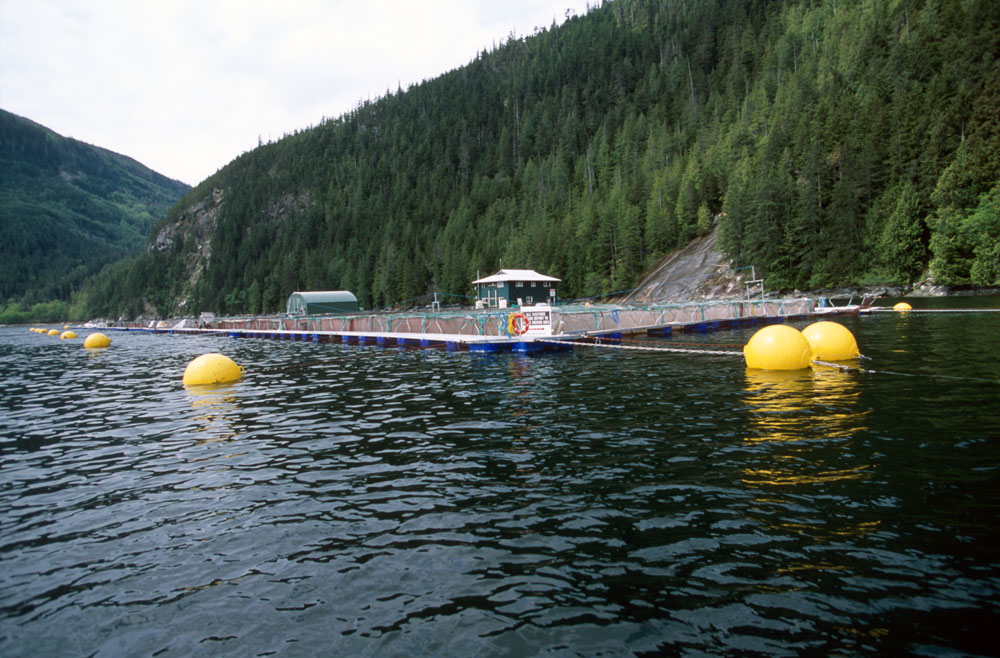
Tools to Resolve Environmental Impacts And Treatment resistance in sea lice — 2 (TREAT2)
Throughout the history of salmon culture, the sea louse (Lepeophtheirus salmonis) has been the greatest external threat to the industry’s viability. Costing anywhere from 10 – 20% of the landed commercial value of the fish and perhaps more so in the near future (summer/fall 2010), this parasite now threatens the existence of salmon culture in the Atlantic. Over the past few years sea lice populations in Chile, northern Europe, and now New Brunswick, Canada, have begun to exhibit resistance to the in-feed treatment SLICE™-Schering-Plough. Since it was introduced in 2000, SLICE™ was so highly effective that it quickly became the only available treatment used against sea lice in Canada. However, treatment failures were first observed in 2008 and now SLICE™ resistance has completely removed the effective use of the drug in NB. With few treatments for licensing on the horizon, the identification of alternative methods of sea lice control would be extremely beneficial to the health and welfare of cultured salmon, as well as the sustainability of salmonid aquaculture. The TREAT2 project plans to stabilize the external effects of sea lice on salmon culture by getting to the heart of parasitic resistance to treatment and host immune mechanisms, by: 1) identifying key genes and genomic regions important for development of chemical resistance using a SNP chip and genetic map; 2) Carrying out current and new product testing and identifying expression patterns of genes involved in biological processes and pathways in host/parasite interactions; and 3) identifying host susceptibility/resistance and therapeutic responsiveness traits and methods for enhancement.
dec. 2012 – dec. 2015
Funded by: ACOA – AIF; Novartis Animal Health co-funded by: AVC – UPEI; Innovation PEI
project lead: Mark Fast (UPEI); Ben Koop (UVic)
Project team: Roy Danzmann (U. Guelph); Crawford Revie, Larry Hammell (UPEI); Brian Glebe (DFO); Ian Thompson (MUN)
collaborators: Frank Nilsen (Sea Lice Research Centre, Research Council of Norway); Simon Jones, Stewart Johnson (DFO); Simon Wadsworth (EWOS Innovation, Norway)
Contact: mfast@upei.ca
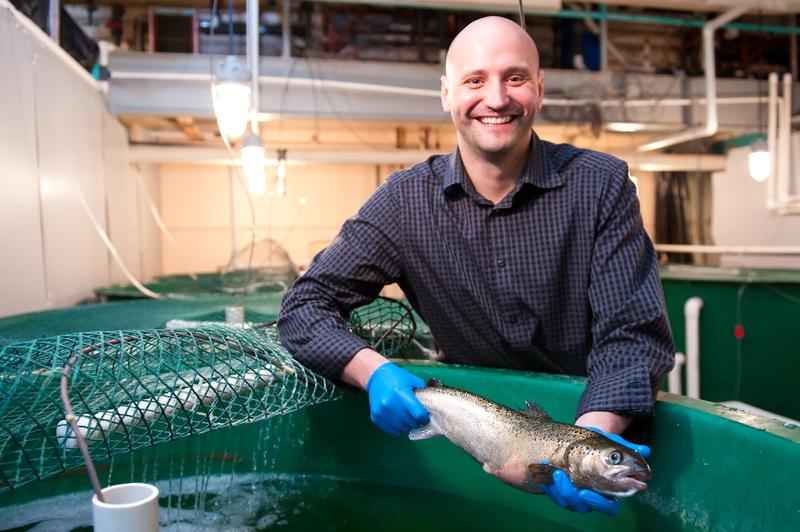
- Date modified: